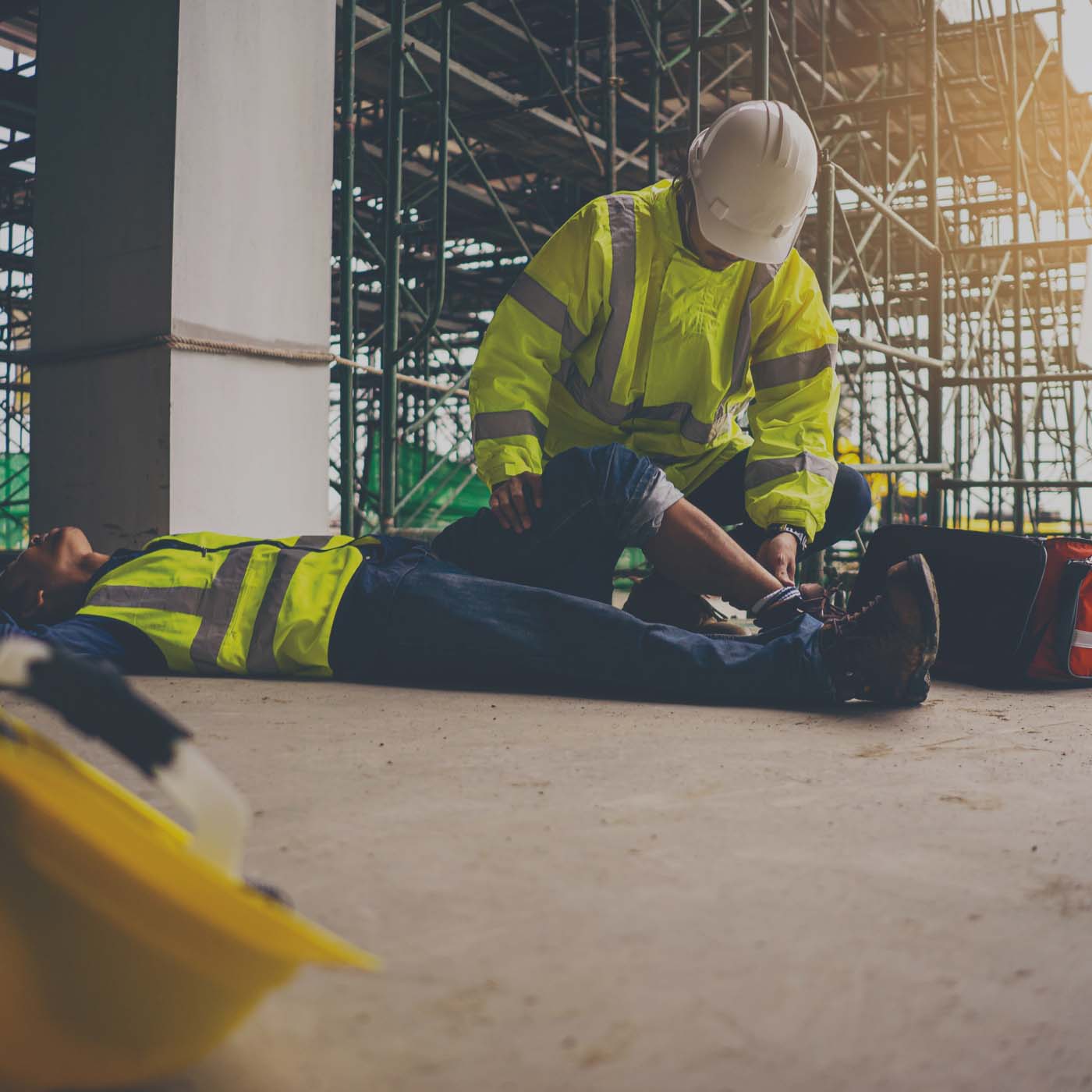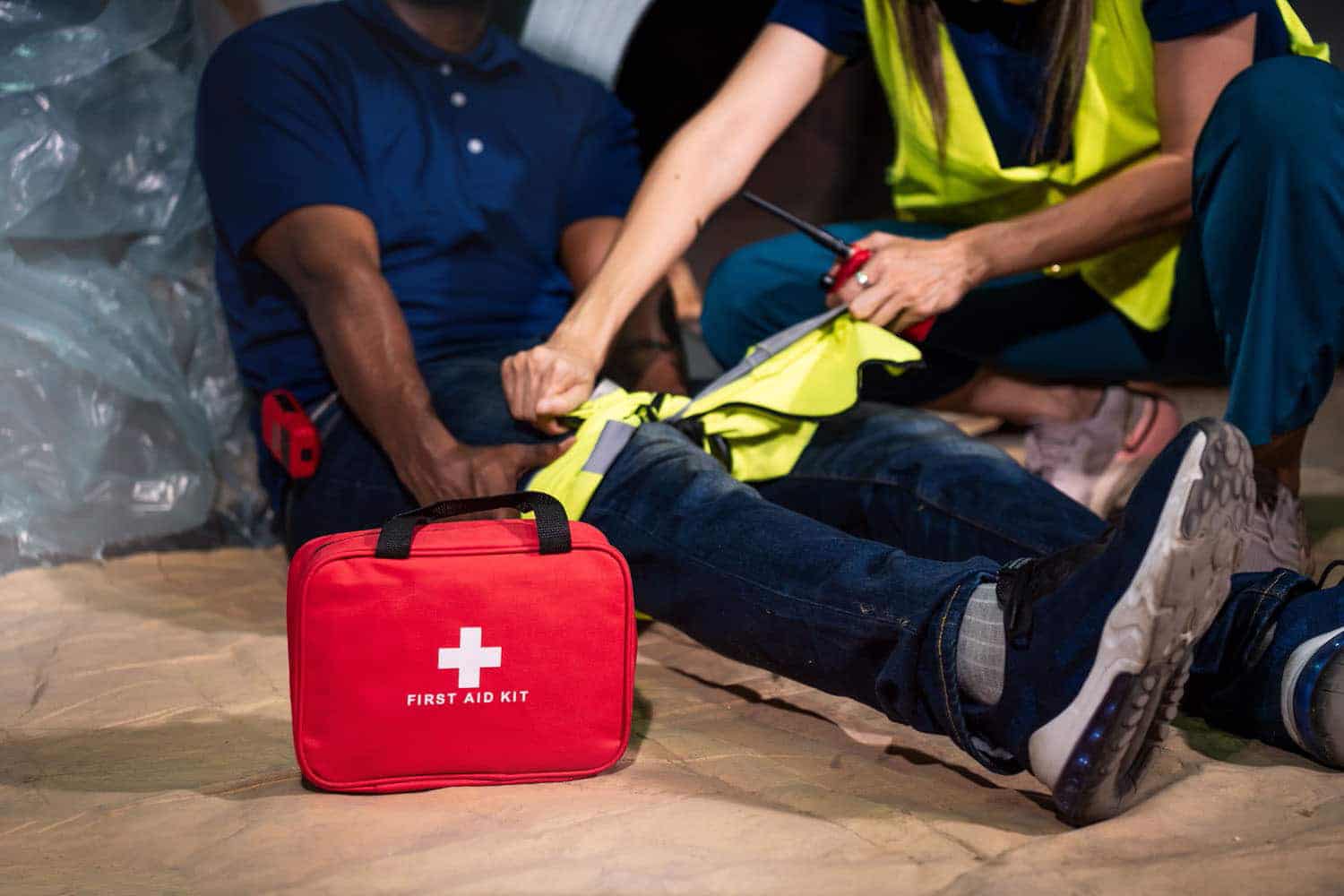
 1 February 2018
1 February 2018Working at heights is by nature a dangerous occupation. A slip, unsteady footing or a momentary loss of balance can be all it takes for an accident to occur.
Thanks to personal protective equipment the risk is minimised, but it is far from erased. We highly recommend that every workplace where employees are working at heights has a fall protection and rescue plan in place. Employees should be well drilled on the details of this plan.
However, even in the most prepared workplaces, employees can still be in danger if they fall and are caught by their harness. If an accident happens and the team does not work fast enough to get the suspended co-worker down, it can quickly become a very dangerous situation.
What happens after a fall?
After a fall has occurred where the employee is caught by a harness, it is important to understand what happens to the victim’s body while they are being suspended in the air.
Blood flow will be affected and, if not moving, the victim can go into Harness Trauma Suspension (also called Suspension Intolerance or Orthostatic shock) within 3 to 20 minutes. A few minutes after this occurs, the victim may faint and the brain will eventually shut down.
Harness Trauma Suspension Explained
It is crucial that blood and oxygen continue to be transported around the body to the brain and vital organs via veins and arteries. When a person is hanging suspended in the air, gravity will restrict blood flow and in addition to this, the harness will constrict the veins and arteries in the groin area. This, in turn, will make the blood pool in the legs and cause a lowering of blood pressure, limiting the supply of blood and oxygen to the brain. When the brain senses this, it sends out warning signs.
The signs for Harness Trauma Suspension are the same as for shock and include:
- Higher pulse and quickening of the breath
- Dizziness
- Nausea
- Tingling/numb feeling
- Sweating
- Light-headedness
- Faintness
- Low blood pressure
- Unconsciousness
Unfortunately, these warning signs are not much help when the victim is hanging suspended in the air. After all, the heart will continue to pump blood around, causing even more blood pooling in the victim’s legs. Eventually, as a last resort, the brain will force the victim to w. Normally, when a person faints, the victim would fall to the ground and be in a horizontal position, which would allow blood to begin to flow once again. In a harness this does not occur – the victim would continue to be in his or her upright position. This is where the situation can become deadly.
Fainting will not only increase the danger by eliminating movement but also, a person that faints in an upright position can suffer from blocked airways with suffocation as a result. Additionally, when the person faints, their brain has now lost its ability to “restart” the body. A UK Government review of harness suspension says that after losing consciousness while suspended in a harness, the victim can suffer brain damage and death within four to six minutes.
Needless to say, when an accident happens that involves a co-worker or team member falling from heights, it is paramount to provide a safe and quick rescue operation.
Knowing what happens to the victim’s body mid-air is important to understand but it is also vital to know what to do when that person is back on the ground.
Tips on how to provide First Aid after a fall
The following list can act as a guide on how to rescue and provide First Aid to a rescued worker after a fall from working at heights:
- Assess the situation. It is important that neither you nor anyone else is put at risk.
- Talk to the worker in suspension. Focus on keeping them calm while you are trying to evaluate their condition. As long as they are suspended in the harness, monitor the rescued worker for any signs of suspension trauma.
- Alert emergency services.
- Get the suspension trauma victim to the ground. However, ensure that this is done without putting yourself or anyone else at risk.
- Quickly loosen or remove the harness.
- Place the rescued worker in a position of comfort, preferably a supine or W-position (The Australian Resuscitation Council and HSE UK state that there appears to be no evidence to support the claim that workers have to be kept in a seated position for about 30 minutes post rescue to ensure stale blood wouldn’t rush back to the vital organs).
- If you or anyone else suspects the rescued worker has suffered a back injury as a result of the suspended fall, immobilise and stabilise the worker on a spine board if available. If not available, keep the worker still.
- Evaluate injuries, airway and circulation status. If you feel unsure, have medical services instruct on how to do this.
- Ensure that the rescued worker receives relevant injury management.
- Even with small accidents or injuries, it is vital that a health-care professional evaluates the worker. Ensure that unconscious or long exposed workers are transported to the hospital.
Recent posts
 4 April 2024
4 April 2024Haz-Ed Celebrates International Women’s Day: A Commitment to Excellence
 16 October 2023
16 October 2023OH&S Overview – Understanding Occupational Health and Safety
 20 August 2023
20 August 2023

